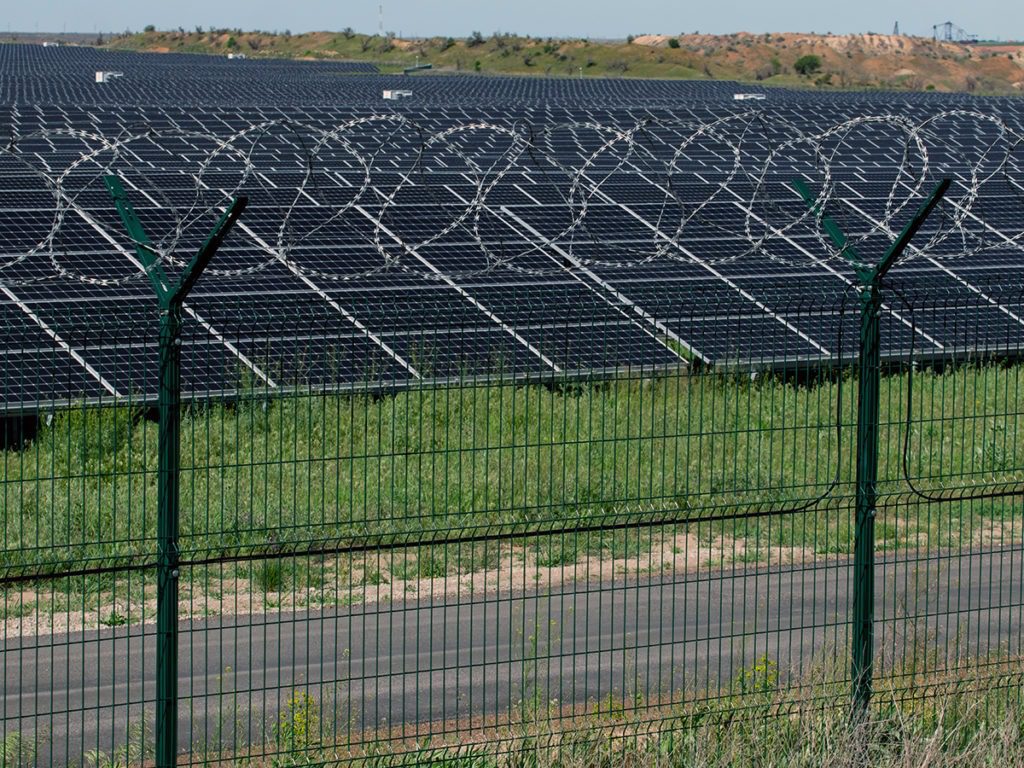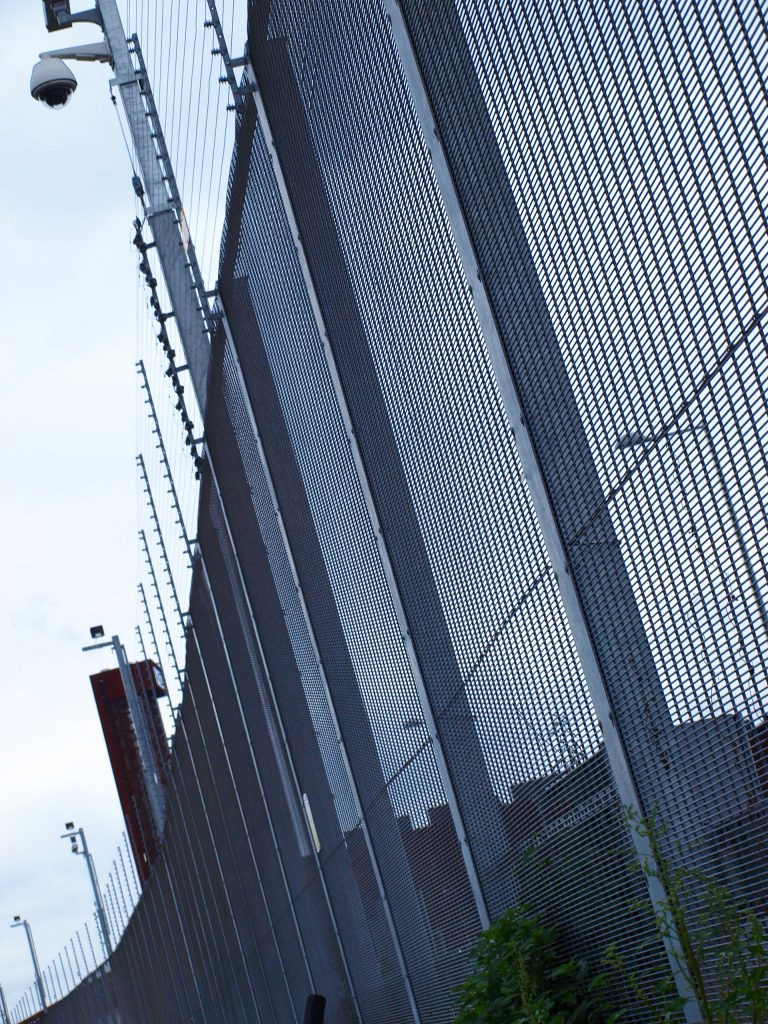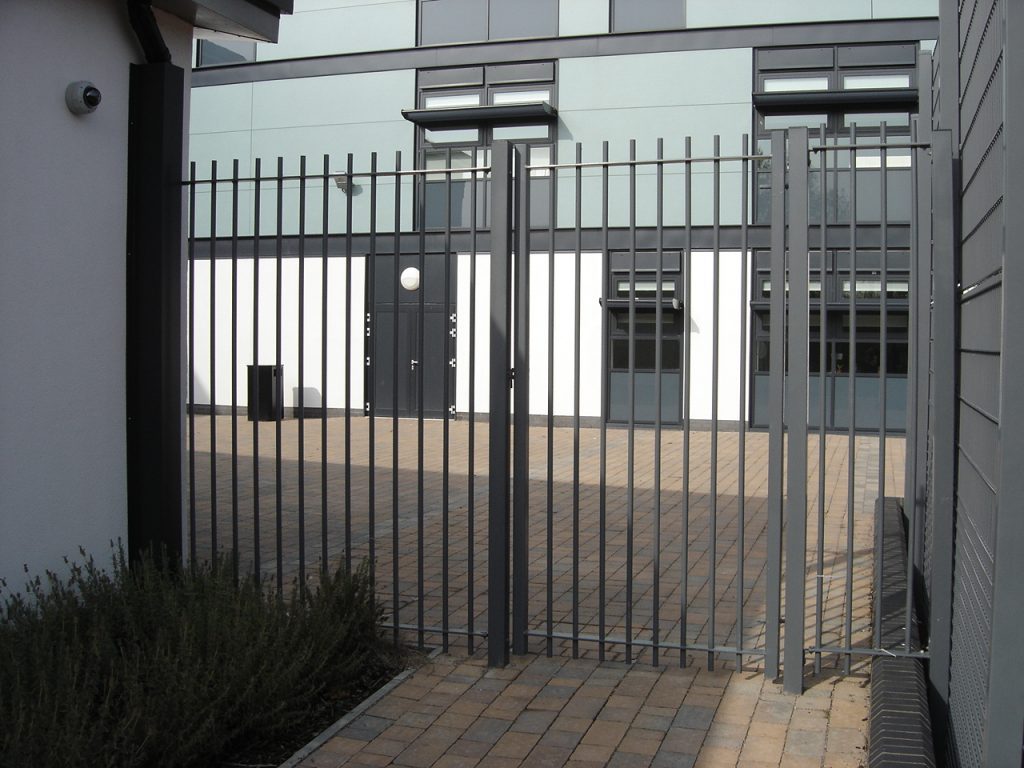Marine coating is a non-specific term generally used to describe a powder coating system that is considered suitable for fencing installed in coastal areas or areas subjected to high levels of industrial pollution with high humidity and aggressive atmospheres.
The name alone has no specific technical definition so buyers/specifiers need to be careful that they are getting what they expect. For example, one manufacturer may supply standard powder coating with an increased film thickness and describe it as “Marine” another may apply a two coat (duplex) system with additional film thickness. The latter would be considerably more expensive and, if specified and applied properly, much more effective at extending service life. Zaun recommend Duplex systems and when we talk about Marine coating that is what we mean.
When should you use duplex marine coating?
A British Standard ISO 12944 has been developed which grades environments by their corrosive effect to enable informed decisions to be made as to whether a duplex marine coating or a lesser coating, is needed to properly protect an item.
Part 2 covers the classification of environments. The gradings start at C1 which covers buildings and equipment in dry, cold areas with low pollution and low corrosivity. It moves through C2, C3 & C4 to C5 where there is very high pollution and/or significant levels of chlorides. This has generally been adopted by the powder manufacturers to define which of their products are suitable for these environments along with film thickness etc.
It is important that you define, on a site by site basis, which environment classification you have.
C4 is typically found on sites near the coast and covers the categories where a duplex marine coating is needed. This includes areas where items that need protection might be subject to an industrial, high humidity, or aggressive atmosphere. It also covers coastal areas that have high salinity. We would suggest that if product is to be installed within 2km of the coast then the cost benefit analysis of a marine coating should certainly be considered.
When specifying coatings for these environments it is important that you ask your supplier to provide data from the powder manufacturer showing which of their powder products will suit the application, this should also include the required film thickness.
With the environment suitably classified and a suitable powder presented by your supplier we recommend that you specify powder coating in accordance with BS EN 13438. This standard is in depth and covers film thickness, pre-treatment requirements and meaningful quality control/destructive testing.
Where would you use a duplex marine coating?
Duplex marine coatings are used extensively on steel fences and gates that are subjected to an environment graded C4 or more. Generally, these would be coastal areas or areas subject to high levels of industrial pollution with high humidity and aggressive atmospheres.
Fences, gates, and similar structures located in a C4 graded environment will need a duplex marine coating to increase their longevity. The effects of chemicals and acids contained in airborne pollution will quickly corrode metals and other materials used for fencing if they are not properly protected.
Similarly, fencing in coastal areas that is subjected to the corrosive and damaging effects of the sun, humidity, salt, and sand will last longer and require less maintenance and repair, if protected by a duplex marine coating that matches the requirements of ISO12944.
What should be put into your specification?
We would recommend that you put in your specifications that you will require;
- Data from the selected powder manufacturer demonstrating that the product selected is suitable for the environment and life (C1-C5M and 15 years plus) – this information should certainly contain their recommended film thickness.
- Certificates of conformity from the paint applicator that the paint system used is suitable for the environment specified for a 15 year plus life and that it has been applied in accordance with the full requirements of BS EN13438 with film thickness as recommended by the powder manufacturer for the environment.
What kind of fencing can duplex marine coating be applied to?
Duplex marine coatings can be applied to any sports, perimeter or security fencing and gate system supplied by Zaun. It is important to note that typically for a C4 environment coating the cost of the fencing would increase by about 20-25%. However, without specifying the correct coating for the environment this would lead to potentially the fencing corroding faster and unlikely to last the typical 15 year plus life span.




